Last month I visited the world’s last remaining zeppelin mast, the Torre do Zeppelin in Recife, Pernambuco, Brazil.
History of the Recife Zeppelin Field
The landing field in Recife was the first zeppelin base in South America. Passenger and mail service to South America was an early dream of Hugo Eckener, who realized it was one of the world’s most promising routes for a zeppelin service. Despite significant trade, cultural, and family ties between Europe (primarily Germany and Spain) and South America (especially Argentina and Brazil), the route was poorly served by ocean shipping; most of the ships on the South Atlantic were slow cargo vessels that often kept irregular schedules, and the few passenger liners between Europe and South America were smaller and much slower than the luxury liners on the North Atlantic. It could take weeks for passengers and mail to make the trip from Europe to South America by ship; zeppelin service could reduce the passage to less than five days.
The governments of Argentina and Brazil recognized the importance of an air link to Europe but were reluctant to fund the enormous cost of airship hangars. Eckener’s survey trips to South America had revealed that the weather in the area around Recife was sufficiently stable for a zeppelin to be operated from a mast, and the government of Pernambuco was willing to finance the construction of a mast, along with fuel and gas storage facilities, in the hope of establishing Recife as the aerial gateway to South America.
LZ-127 Graf Zeppelin first visited Recife on May 22, 1930, as part of the ship’s “Triangle Flight” between Europe, South America, and North America.
Recife (Pernambuco) became a regular stop on Graf Zeppelin’s South American service. The airship arrived in Recife in the evening and departed the next morning, flying south at reduced speed so passengers could enjoy the view of the coast of Brazil before a good night’s sleep and arrival in Rio de Janeiro the next morning.
The larger LZ-129 Hindenburg had greater range and usually flew nonstop between Frankfurt and Rio without landing in Recife, but Hindenburg used the Recife mast on two voyages in 1936.
The Mast at Recife
The first mast build on the Jiquiá site was a tower of fixed height, supported by guy wires, built specifically for the dimensions of LZ-127 Graf Zeppelin.
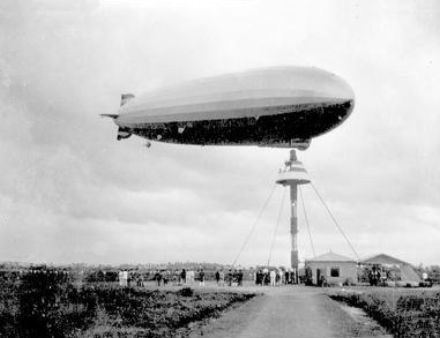
LZ-127 with the original mast at Recife
As LZ-129 Hindenburg neared completion the original mast was replaced by the current structure, which featured a telescoping inner section to adjust the mast to airships of varying size.
The Recife mast was last used on May 4, 1937, when LZ-127 Graf Zeppelin departed on a routine return from South America to Germany. A few days later the ship’s captain, Hans von Schiller, received news by radio of the Hindenburg disaster at Lakehurst, New Jersey; Graf Zeppelin landed in Friedrichshafen on May 8, 1937, and never again carried a paying passenger. Recife’s seven year career as the airship gateway to South America was over.
The Mast Today
After years of decay and neglect the Recife mast was restored in 2012-2013 in a project supervised by sculptor and restorer Jobson Figueiredo and financed by Fundarpe (the Foundation of the Historical and Artistic Heritage of Pernambuco), the Public Ministry of Pernambuco, the Prefecture of Recife, and the Caixa Econômica Federal (a financial institution owned by the Brazilian government).
In addition to stabilizing the mast and replacing parts deteriorated by age, such as the wooden floors of the three platforms, the project restored functionality to the telescoping mast, enabling it to be raised to its highest position, which was used to moor Hindenburg.
Today the mast is fully functioning and freshly painted.
The Site
There is small display on the site about the history of zeppelins in Recife.
A local man named Flavio tends to the site with affection and enthusiasm. He showed us a small room near the mast where he sells small items, such as hats and bags made of recycled material, to raise money for the maintenance of the site and improvement of the surrounding area.
Future Development Concept
Local authorities have developed plans for a major redevelopment of the 36 hectare (90 acre) Jiquiá site into a Scientific and Cultural Park that would include a zeppelin museum, sports facilities, and conversion of existing military buildings into a science museum and planetarium.
Unfortunately several people at the site told us that neither the local nor the federal government seem interesting in financing the project, and given the current state of Brazil’s economy and government it seems unlikely that such an expensive project will be realized.
How to Visit the Mast
The mast is located on an active military base in the Parque do Jiquiá, which can be reached by car or taxi. It is also a short walk from the Mangueira station on the Recife metro, but you should be aware that Brazil has a significant crime problem and the area around Jiquiá is a place to be especially careful.
The mast is located next to the barracks and training ground of the military base. We were immediately confronted by well-armed soldiers when we arrived, wanting to know why we were there, but when the person serving as our guide explained the reason for our visit the military personnel quickly became friendly and hospitable and seemed pleased that a foreign visitor appreciated the historical treasure in their midst. It is evident from the historic displays that occasional visits from tourists are expected, but naturally “your mileage may vary” and there is no guarantee the military personnel on duty will be as welcoming as the men we encountered.
Special Thanks
I would like to extend my thanks to two people who helped make this visit possible.
When I first explained my strange quest to Marcio Abreu, of the Recife Tourism Office, he was initially concerned about the difficulty of gaining access to an active military base, but when Marcio saw my enthusiasm — and realized I had not come this far to take “No” for an answer! — he agreed to help me with an equal enthusiasm of his own.
Thank you, Marcio!
And my special thanks to Túlius Mota, a civil engineering student who works part time as a tour guide in Recife. The visit would have been a lot more difficult without Túlius’s friendly and energetic assistance. Since I don’t speak a word of Portuguese, Túlius agreed to help me navigate Recife and communicate with the military personnel at the base. His assistance was invaluable, and if anyone would like to visit Recife and is looking for local guide, free to send me an email and I will be glad to pass it along to him.
Thank you, Túlius!
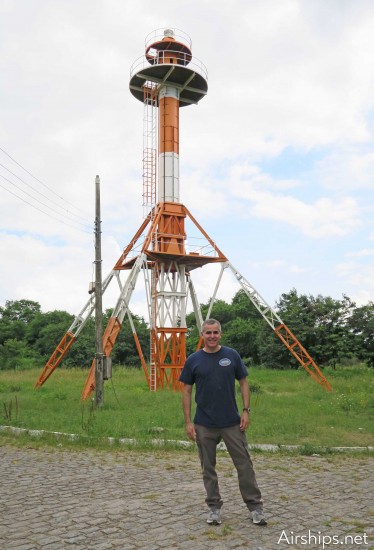
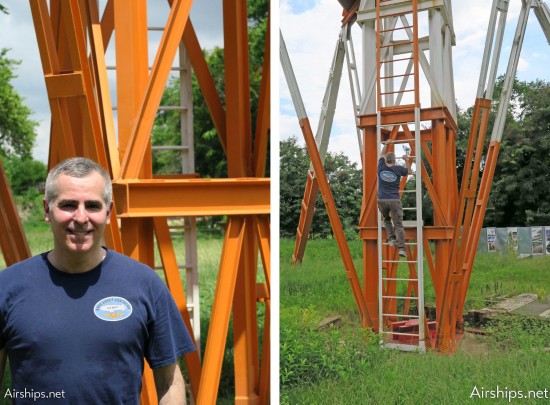
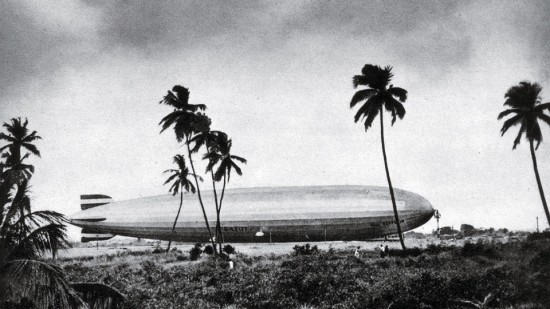
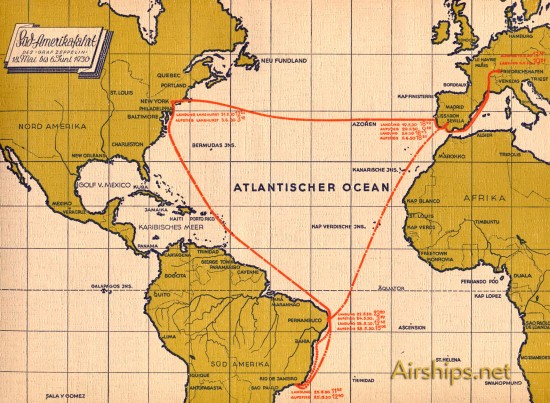
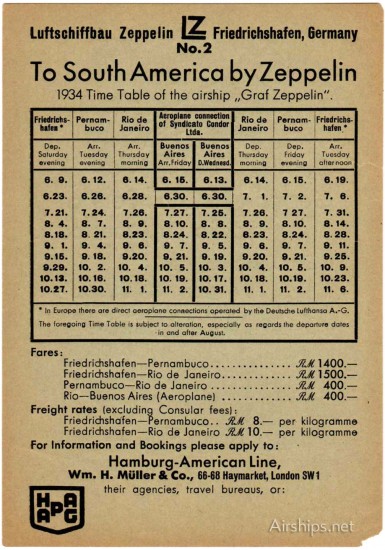
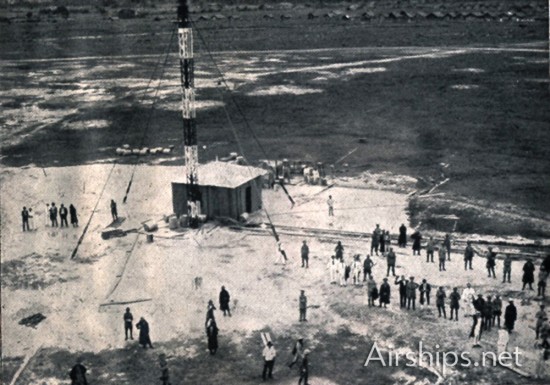
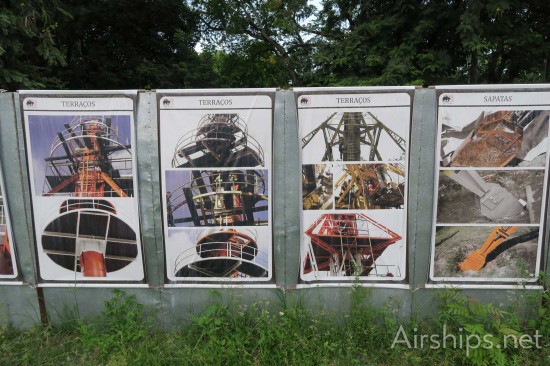
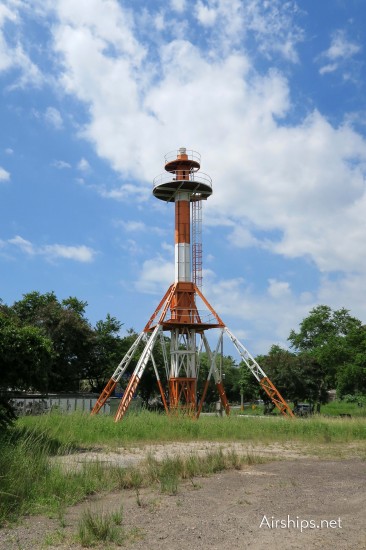
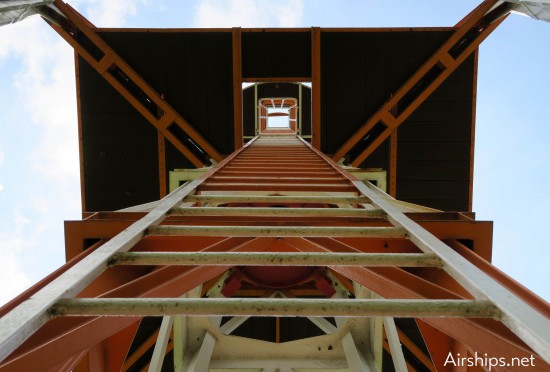
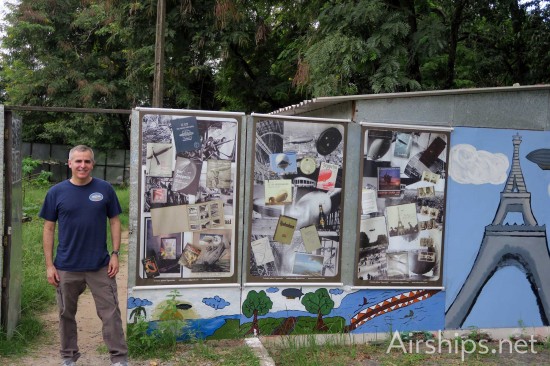
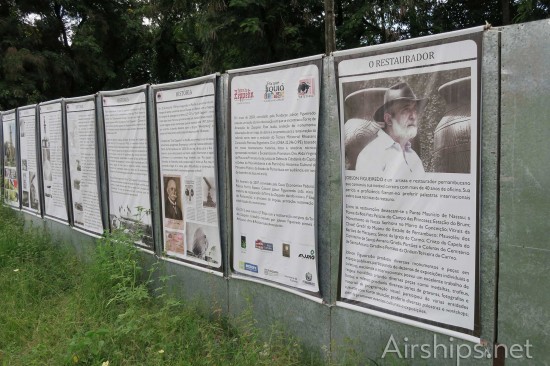
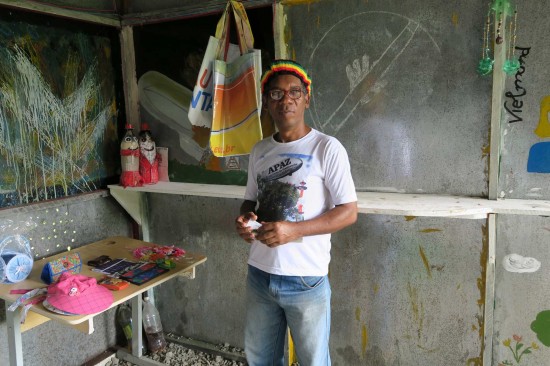
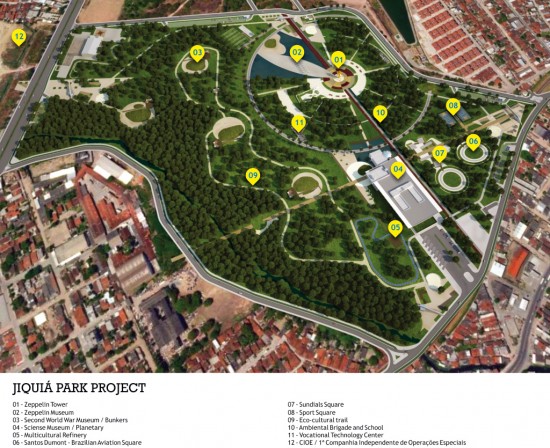
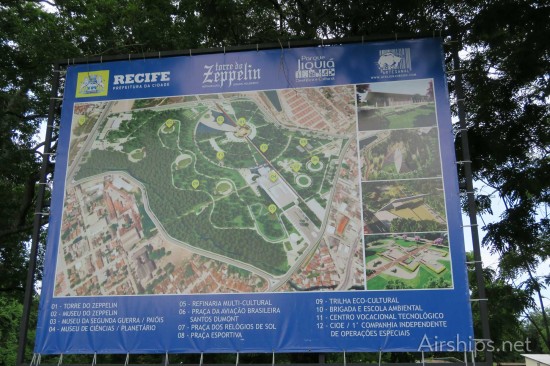
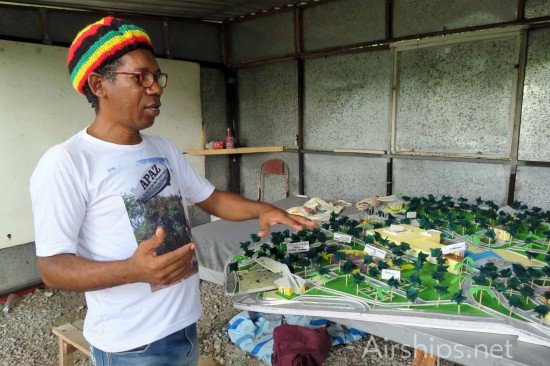
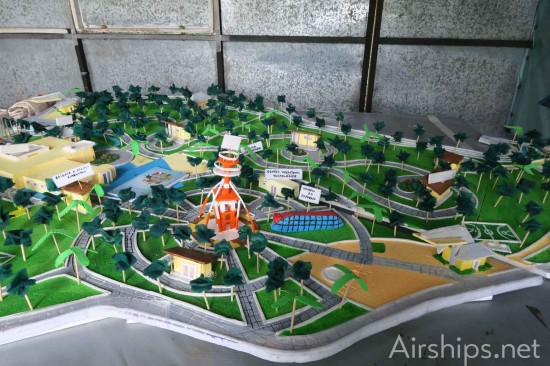
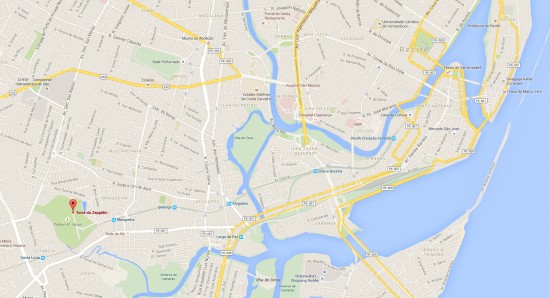
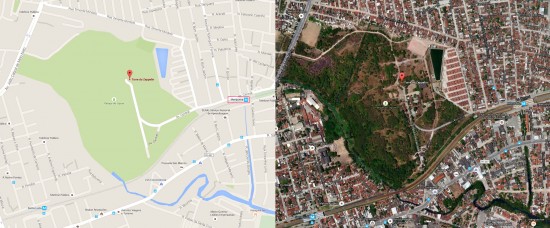
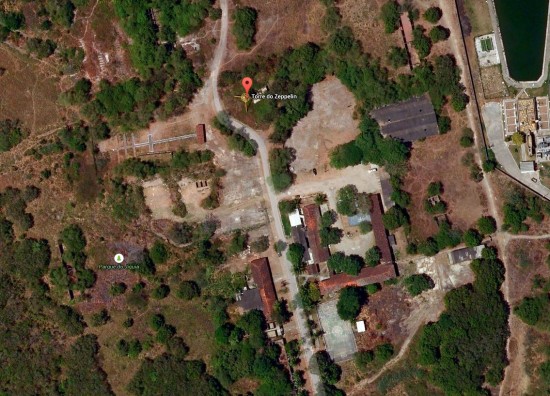
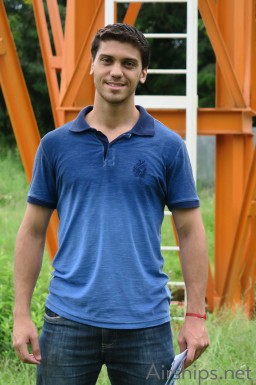
Dan, I was fascinated by your article, having spent time in Recife in 1973. Thanks for all your research and for sharing!
Hi Dan, came across your page, I have a couple of pictures from about 1931 of some of the crew of HMS Dauntless, having a tour of the Zepllin whilst it was moored at Pernambuco… from my grandfather’s tour album. He was a Royal Marine.
2019 is the centenary of the R 34 airship’s double Atlantic crossing. Museums all over the world have shown interest in a commemoration. See http://www.airships.me.uk
This was a fixed mast, or pulled out by hand on rails??? looks kind of high for off loading and loading supplies how did they do that???
Thanks for coming to Brazil, Dan. And thanks also for the very nice article on the Zeppelin mast in Recife, well done!
Dan:
Thanks for sharing. Good article! Keep up the good writing.
Today is an important date for us Brazilians who love the history of zeppelins. today complete 85 years of the first landing of the Graff Zeppelin in Rio de Janeiro. I posted on facebook a little history of these ships and talked about Dr. Hugo Eckner, in search of some… Read more »
Thank you for the kind words, and I look forward to seeing your photos of the hangar in Santa Cruz!
Very good, Dan! Pitty we couldn’t meet this time.
Cheers from Berlin…
Very good article!!! Congrats Dan!!!
Thank you too for the visit and for promoting the Zeppelin mast in Recife!
Come back soon!
Good article, nice photos – thanks for sharing!